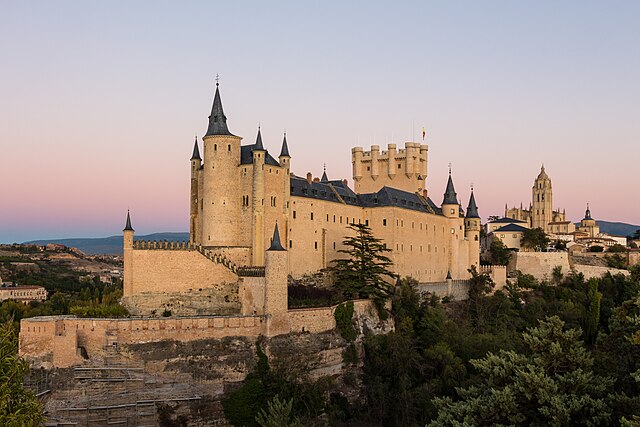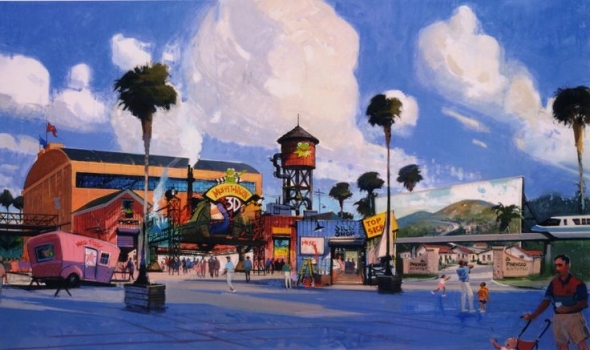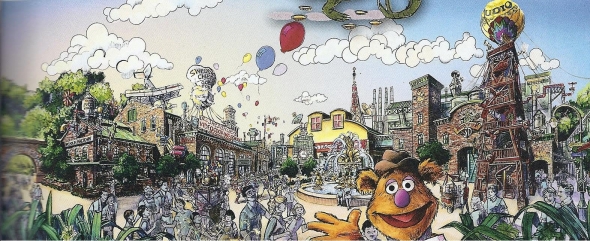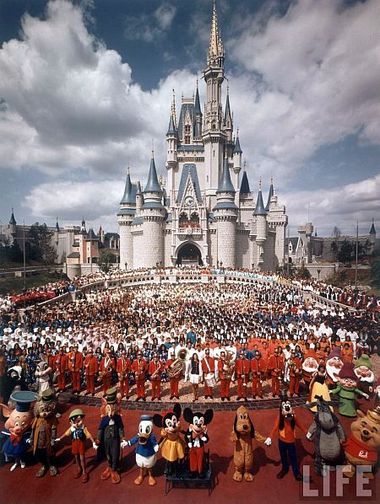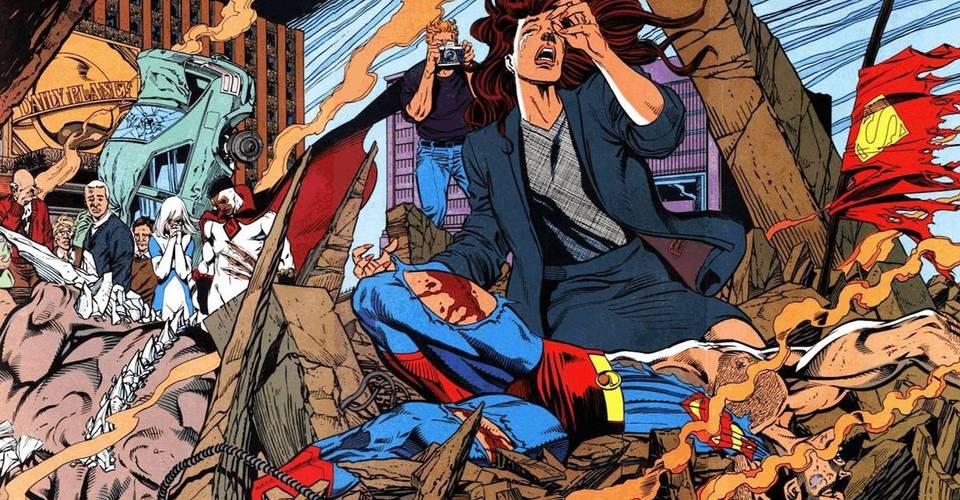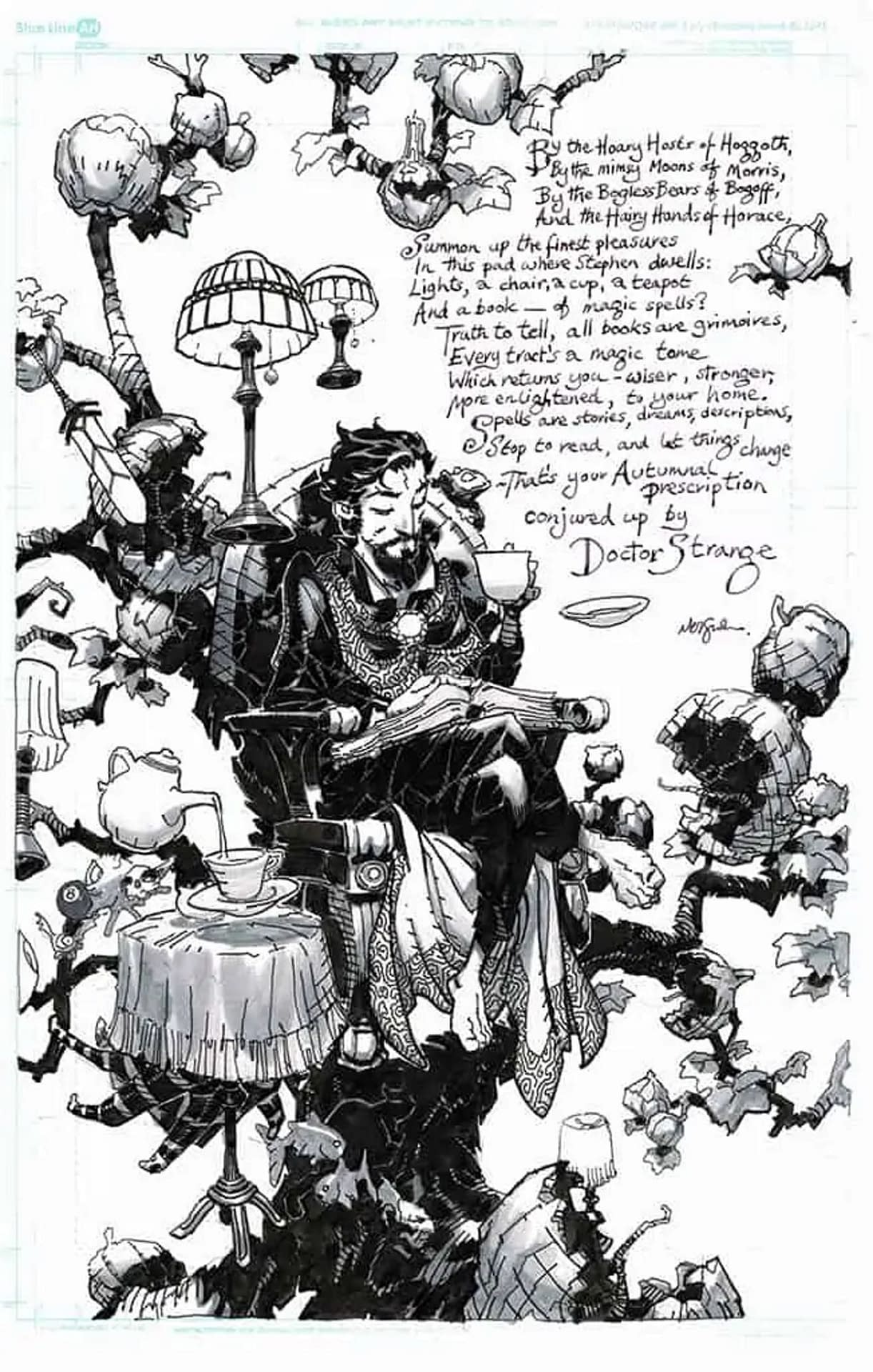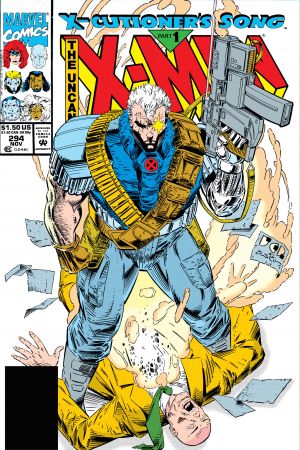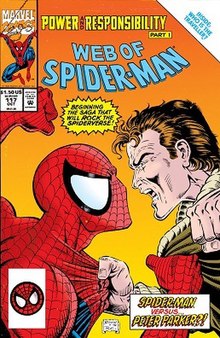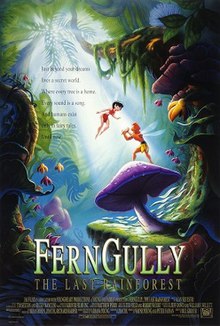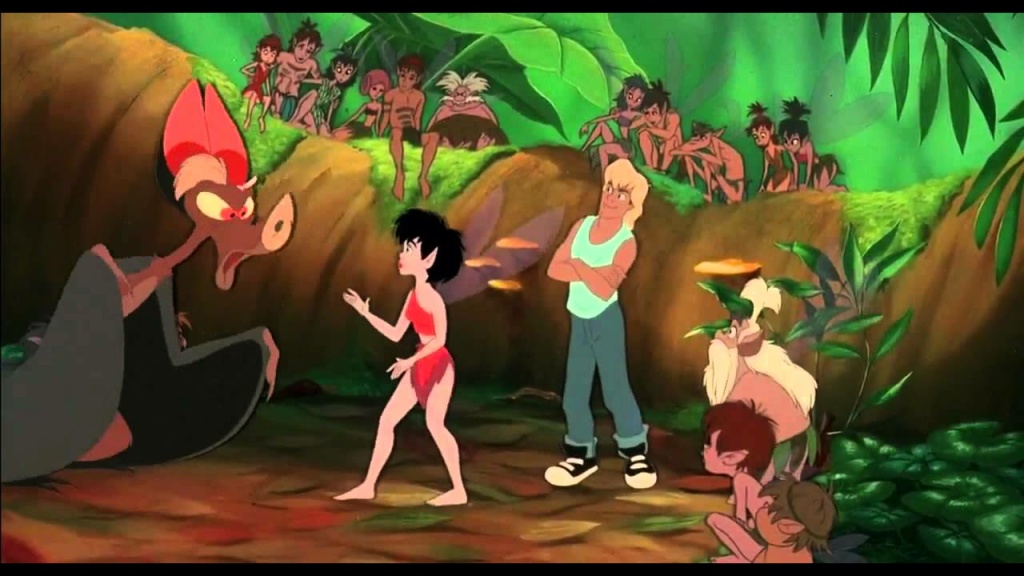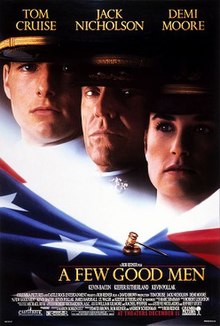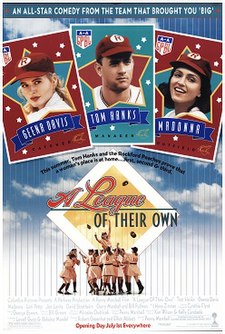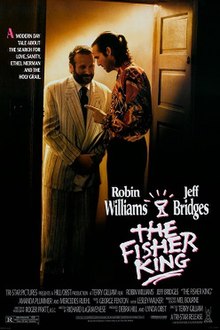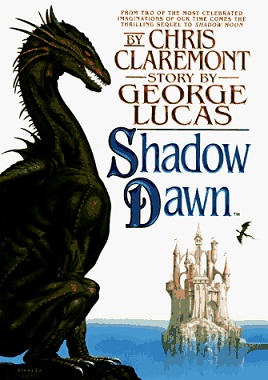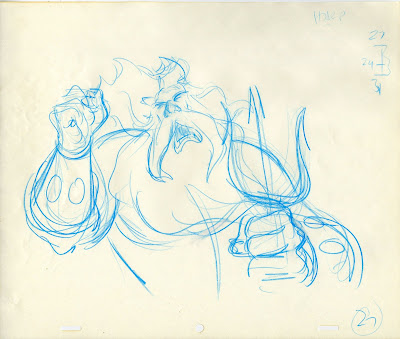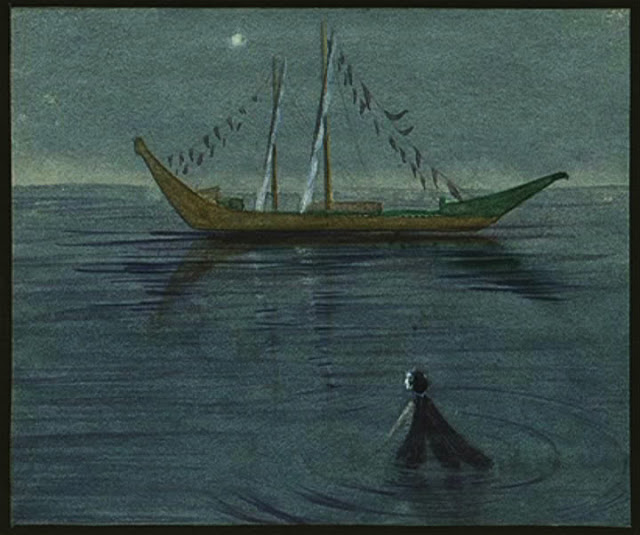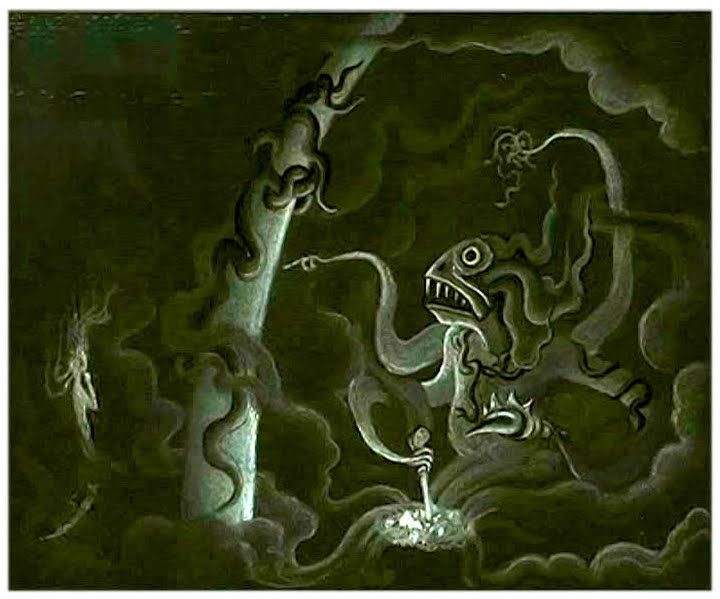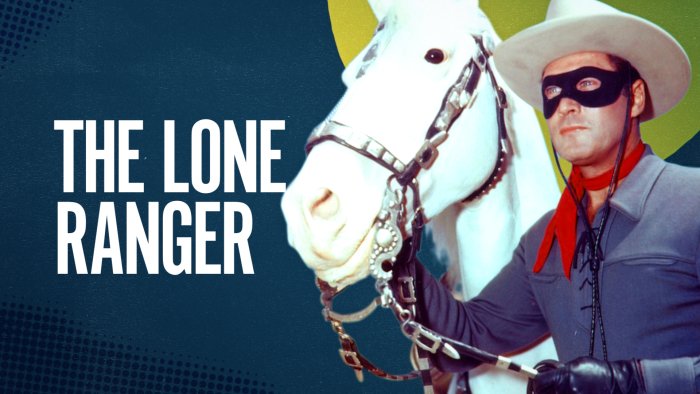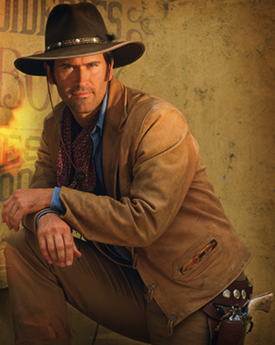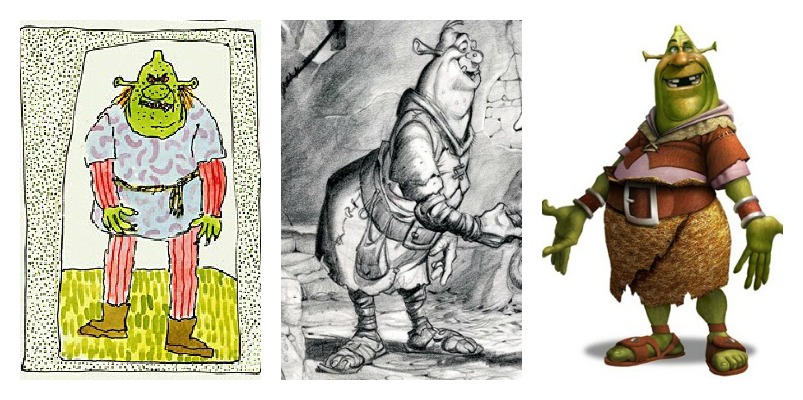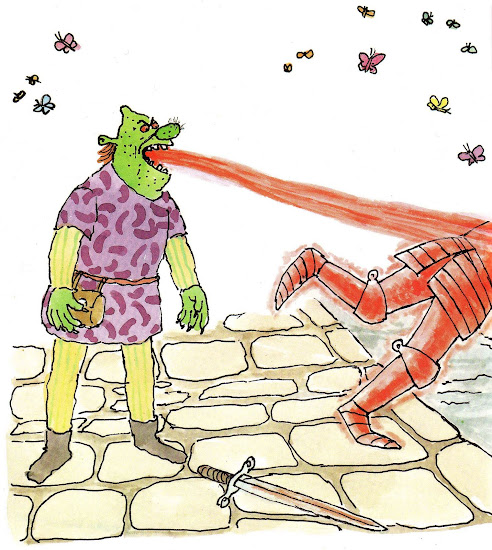Chapter 14: Tilting at Windmills
Post from the Riding with the Mouse Net-log by animator Terrell Little
In ’91 all of animation was in a tizzy. Aladdin was in post, they were finishing up animation on The Bamboo Princess, and Ron Clements had finally achieved his desire to get The Little Mermaid greenlit and into early production. 3D was playing with Shrek and I’d just finished my section of War Stories and was still supporting TaleSpin when Roy Disney pulled me, Andreas [Deja], and Mike and Patty Peraza into a new project, one that he told us was “something that Walt himself always wanted.”

(Image source “Disney.fandom.com”)
The subject was an old novel, in fact the oldest novel, they say: Don Quixote. And, ironically, Disney had been tilting at that windmill since the ‘40s[1], always starting and stopping, stuck in pre-production, never able to get it into full animation. But with Disneyland Valencia in a rush to be completed and opened by the spring of ’92, Jim and Roy knew that now was the time for Disney’s Don Quixote to finally see its moment in the Andalusian sun.
But time was short and resources spread thin, so animating the entire film would be an impossible dream. But then Terry Gilliam, who’d been directing Toys, got wind of the project. He’d been considering a version of Don Quixote himself, and with principal photography over on Toys, he practically begged Jim to let him do it. Terry, Jim, and Roy decided that the feature should be a hybrid live action/animation feature, with Don Quixote and the other characters all played by humans, and Don Quixote’s hallucinations all animated[2].
“I swore after [Who Framed] Roger Rabbit that I’d never mix live [performance] and animation again,” Terry told us with a laugh.
I remembered Roger Rabbit 1. They had to shoot it twice: once with a stuffed rabbit so Ed Harris and Tim Curry knew where to look to maintain eyelines, and a second time with nothing there so they could animate in the Toon characters later. But Jim had a different idea. They’d been experimenting with Digital Puppetry techniques since Waldo C. Graphic on Inner Tube, but so far, the applications had been limited. Jim called in his son Brian, whose team figured out how to mix the digital puppetry with some motion capture tracking, allowing a real puppet with an integrated Waldo and some motion capture balls to automatically generate a digital wire frame image. Us animators could then use DATA based technology to digitally ink and paint a two-dimensional image onto the animated character that the puppet was standing in for.
This digital rotoscoping meant that Terry could direct the actors in the live film interacting with the puppet, which the Waldo and motion tracking converted into a digital wireframe linked to points of reference in the original film image. Then we could digitally ink and paint the animated figures using the wireframe as a reference and then composite it back over the original puppet. No dual-takes required. The eye lines were maintained since the actor was interacting directly with the puppet. Multiple takes could be made and selected from. And the puppet performer could interact in real time with the actor, they could ad lib, they could play off of one another, they could physically touch, and they could walk around each other in a circle, even. We could match some of the most complex toon-human interactions we’d done on Roger Rabbit and with a fraction of the work.
I hear that Terry wanted to film on location in La Mancha, and they did in some cases, particularly for recognizable landmarks (they flew us animators out to the region for a week to study the landscape). But Jim pointed out that La Mancha looked quite a lot like some parts of California, particularly around San Luis Obispo, saving money for where it counted. They took advantage of sound stages as well.
Gilliam searched far and wide to find his Quixote. He’d find him in the strangest of location. Acclaimed French actor Jean Rochefort was visiting Disney Studios. He’d just made a critical splash in Hollywood from staring in The Hairdresser's Husband (Le Mari de la Coiffeuse), but he was known to Roy and Jim for another reason: he was a voice actor for the French translation of several Disney Muppet and animated series, beginning with Welcome to Pooh Corner[3]. He was in discussions to do the French translation of Death for Mort. Terry knew the very second that he saw him that he’d found “the perfect Quixote.”
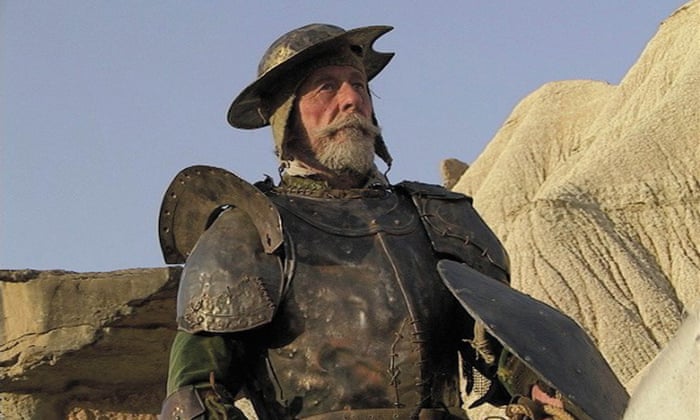
Jean Rochefort as Don Quixote (Image source The Guardian)
After considering Michael Palin as Sancho Panza, eventually Chicano actor Cheech Marin was selected for the role. Terry rounded out the main cast with Rita Moreno as Aldonza Lorenzo, the crass and vulgar peasant woman that Don Quixote hallucinates as the perfect princess “Dulcinea” (we even modelled the animated Dulcinea from Quixote’s hallucinations on Rita back in the 1960s). Plenty of Python regulars made cameos as well. And while Jean and Cheech were near perfect as Quixote and Panza, Rita really stole the show as Aldonza/Dulcinea, putting on both the crass and vulgar in live action, and over-the-top sweetness in the animation. Seriously, it’s no wonder why she’s got a PEGOT! She’s incredible. They even gave her a special Annie award for the role, so now she’s a…PEGOTA? APEGOT?
Gilliam even recorded each scene in both English and Spanish, giving the Spanish Language release an organic realism that made it a smash sensation in Spain and Latin America. He didn’t have to do that. In fact, he’d likely have gotten in trouble if the execs had found out since it added about $5 million to the cost of production and added weeks of filming time, but the extra sales in Spanish speaking nations, where it was a breakout sensation, more than made up for it.
But enough about the live action stuff. This is my tlog, so let’s talk in detail about the best part: the animation. Rather than be traditionally drawn, inked, and painted by hand, the animation would, as I briefly mentioned before, make use of the new digital techniques the Pixar software and the DATA systems allowed. My first experience with digital animation techniques was actually in Japan working on Porco Rosso, though we heavily used it on TaleSpin as well since it allowed for easier editing in post. The technique also allowed for bright and vibrant colors, almost like the old lumage animation method that John Korty pioneered. We’d make pencil test sketches by hand the “old fashioned way”, which is why most people still refer to it as “hand drawn”, which is technically correct even as the majority of the animation is digital after that. The hand images were then scanned in where they’d be digitally inked and painted using the DATA software. The Ink & Paint folks were right to fear for their jobs at that point, and poor old Inky the Llama was sending out her resume.
But we very rarely did any actual hand drawing on Don Quixote. As mentioned earlier, with the digital puppetry creating convenient wire-frame images in addition to the original live puppets, actually digitally inking and painting the hallucinations became essentially a computer-age case of rotoscoping! We drew the digital ink lines directly over the wire frames and live puppet images, over the actors themselves on occasion (in particular Rita for the Dulcinea transformations), and over any important background items such as windmills (especially when they transformed into giants!), and then we colored in the gaps, this latter step was often as simple as “point and click”. The result was the most realistic human-animation interactions yet seen, and would be applied to future hybrid films, particularly the Roger Rabbit sequels.
And the slight bit of uncanny that comes with any rotoscoping just added to the hallucinatory surrealism of it all.
The project became seriously fun in large part because of the novelty, and in large part due to Terry, who’d stop in all the time with excited suggestions and with a childlike glee. Normally no one wants a director looking over their shoulder, but Terry, a skilled and eclectic animator himself, had great suggestions and would listen to yours and it all sort of became a collaborative project. I have no idea why Terry has a reputation as “difficult to work with”. Probably because he demands perfection, but when “Perfection is the Minimum Requirement” already (as it is at Disney), then he’s simply another inmate helping to run the asylum.
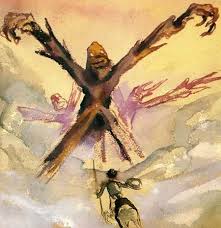
(Image source “jimhillmedia.com”)
The biggest challenge artistically speaking was the transformation sequences, turning the real world into the chaotic and colorful hallucinatory dreamworld of Don Quixote’s mind. I took lead on transforming the iconic windmills into giants, basing the design in large part on the old 1940s UPA-inspired concept art out of the archives. Taking advantage of some digital “pull, bend, and skew” functions DATA allowed, and stealing some style choices from Bat-Shit Productions (particularly Fear & Loathing), the blades of the windmills transformed in a fluid, acid-trippy kind of way into the reaching arms and striding legs of giants. At Terry’s suggestions we took a further cue from Salvador Dali and stretched limbs out in impossible lava-lamp-like ways and had everything seemingly on the verge of melting.
We also deliberately made things stylistically reminiscent of illuminated medieval manuscripts as a nod to Terry’s Monty Python animation.
And the production could not have gone better![4] Jean, Cheech, and Rita had perfect chemistry and seemed to intuitively “get” what Terry wanted, so take after take went according to plan. No setbacks or accidents, no massive arguments on set, not even a “wrong brand of bottled water” incident.
We had so much fun in animation, the whole team just coming together in near perfect partnership: me, Andreas, Mike and Patty Peraza, and the rest. In fact, we ended up finishing principal animation early simply since we were all having so much fun that we’d work late into the night, laughing the whole time. In fact, the biggest difficulty that I ran into was my wife starting to think that I was having an affair because I’d return home late on a Friday night, laughing and singing! Thankfully Mike & Patty bore witness to the actual silliness of the time.
We even had a John Williams sound track, only not that John Williams, but the other famous John Williams in the classical music business: the world class Classical Guitarist!
This John Williams, to be precise
John Williams partnered with Paul Williams (no relation) as a Lyricist and arranger and Rita Moreno and Cheech Marin joined in to help produce the music. Since they had a “John and Paul”, Cheech jokingly called the four of them “Los Escarabajos.” While not a musical per se (Terry really wanted to avoid direct comparisons to The Man of La Mancha), there are a couple of notable times in the hallucinatory cartoon world where Quixote, Panza, and Dulcinea break out into song and dance in a pseudo-diegetic way that’s real enough to Quixote, at least. For the most part, the music was deliberately Spanish, based on traditional music from the La Mancha region, but with a strong Grenadine/Flamenco influence, all led by John’s virtuoso guitar (digitally rotoscoping his dancing fingers as he played was a major challenge!), occasionally joined by other traditional Spanish instruments and in particular by Rita’s amazing voice.
What emerged was a bright and vibrant world, somehow both Medieval and Modern, Stylistic and Surrealist. We won Annie awards for our work, just as the Digital Puppetry techniques won technical awards and the film itself won for Best Adapted Screenplay in ‘93. John, Paul, Rita, and Cheech won the Oscar for Best Original Score with rumors persisting to this day that John Williams won the Oscar after being mistaken by the Academy for the other John Williams (“Wow, he’s really branching out! This is a whole new side to him!”). At the Academy Awards, the camera even panned to the other John Williams in the audience (who laughingly waved it off), having to whip-pan over to the right one!

Not this, but a more faithful adaption of the source material
But perhaps the coolest part was that we all got to go to Spain and Disneyland Valencia for the World Premier of Lost in La Mancha[5], all a part of the weeks-long Grand Opening of the long-awaited Disneyland Valencia resort! We got to do a self-guided auto-tour of La Mancha, ironically getting lost ourselves and needing to ask directions from the locals, who instead invited us in for Sangria.
We also got to see the new Disneyland, which was frankly the best Disneyland ever! Sleeping Beauty’s Castle was breathtaking and while I love the original Space Mountain, it’s got nothing on De la Terre à la Lune, which is just so awesomely designed and executed.
There are times when I can’t help but to love this job.
[1] Read all about the literally Quixotic attempts to get it off the ground, along with awesome concept art, here. Also read about the even more Quixotic Terry Gilliam attempts to get a Don Quixote film off the ground here. And a Bedpan Helm tip to @TheFaultsofAlts for reminding me about this.
[2] Note that the idea for a Quixote-inspired film set in the present day didn’t fully get fleshed out until the late 1990s, and in the early ‘90s Gilliam wanted to do a more faithful adaption, though still set in the present day. But Disney wants a fully faithful adaption. As such, this film will be a more faithful adaption of the source material set in the time of Cervantes.
[3] True in our timeline! In this timeline he becomes a Disney translation regular.
[4] Allo-ironically took it in the exact opposite direction from our timeline’s legendarily (and ironically appropriately) Troubled Production.
[5] The final name of the film, allo-ironically enough!
Post from the Riding with the Mouse Net-log by animator Terrell Little
In ’91 all of animation was in a tizzy. Aladdin was in post, they were finishing up animation on The Bamboo Princess, and Ron Clements had finally achieved his desire to get The Little Mermaid greenlit and into early production. 3D was playing with Shrek and I’d just finished my section of War Stories and was still supporting TaleSpin when Roy Disney pulled me, Andreas [Deja], and Mike and Patty Peraza into a new project, one that he told us was “something that Walt himself always wanted.”
(Image source “Disney.fandom.com”)
The subject was an old novel, in fact the oldest novel, they say: Don Quixote. And, ironically, Disney had been tilting at that windmill since the ‘40s[1], always starting and stopping, stuck in pre-production, never able to get it into full animation. But with Disneyland Valencia in a rush to be completed and opened by the spring of ’92, Jim and Roy knew that now was the time for Disney’s Don Quixote to finally see its moment in the Andalusian sun.
But time was short and resources spread thin, so animating the entire film would be an impossible dream. But then Terry Gilliam, who’d been directing Toys, got wind of the project. He’d been considering a version of Don Quixote himself, and with principal photography over on Toys, he practically begged Jim to let him do it. Terry, Jim, and Roy decided that the feature should be a hybrid live action/animation feature, with Don Quixote and the other characters all played by humans, and Don Quixote’s hallucinations all animated[2].
“I swore after [Who Framed] Roger Rabbit that I’d never mix live [performance] and animation again,” Terry told us with a laugh.
I remembered Roger Rabbit 1. They had to shoot it twice: once with a stuffed rabbit so Ed Harris and Tim Curry knew where to look to maintain eyelines, and a second time with nothing there so they could animate in the Toon characters later. But Jim had a different idea. They’d been experimenting with Digital Puppetry techniques since Waldo C. Graphic on Inner Tube, but so far, the applications had been limited. Jim called in his son Brian, whose team figured out how to mix the digital puppetry with some motion capture tracking, allowing a real puppet with an integrated Waldo and some motion capture balls to automatically generate a digital wire frame image. Us animators could then use DATA based technology to digitally ink and paint a two-dimensional image onto the animated character that the puppet was standing in for.
This digital rotoscoping meant that Terry could direct the actors in the live film interacting with the puppet, which the Waldo and motion tracking converted into a digital wireframe linked to points of reference in the original film image. Then we could digitally ink and paint the animated figures using the wireframe as a reference and then composite it back over the original puppet. No dual-takes required. The eye lines were maintained since the actor was interacting directly with the puppet. Multiple takes could be made and selected from. And the puppet performer could interact in real time with the actor, they could ad lib, they could play off of one another, they could physically touch, and they could walk around each other in a circle, even. We could match some of the most complex toon-human interactions we’d done on Roger Rabbit and with a fraction of the work.
I hear that Terry wanted to film on location in La Mancha, and they did in some cases, particularly for recognizable landmarks (they flew us animators out to the region for a week to study the landscape). But Jim pointed out that La Mancha looked quite a lot like some parts of California, particularly around San Luis Obispo, saving money for where it counted. They took advantage of sound stages as well.
Gilliam searched far and wide to find his Quixote. He’d find him in the strangest of location. Acclaimed French actor Jean Rochefort was visiting Disney Studios. He’d just made a critical splash in Hollywood from staring in The Hairdresser's Husband (Le Mari de la Coiffeuse), but he was known to Roy and Jim for another reason: he was a voice actor for the French translation of several Disney Muppet and animated series, beginning with Welcome to Pooh Corner[3]. He was in discussions to do the French translation of Death for Mort. Terry knew the very second that he saw him that he’d found “the perfect Quixote.”

Jean Rochefort as Don Quixote (Image source The Guardian)
After considering Michael Palin as Sancho Panza, eventually Chicano actor Cheech Marin was selected for the role. Terry rounded out the main cast with Rita Moreno as Aldonza Lorenzo, the crass and vulgar peasant woman that Don Quixote hallucinates as the perfect princess “Dulcinea” (we even modelled the animated Dulcinea from Quixote’s hallucinations on Rita back in the 1960s). Plenty of Python regulars made cameos as well. And while Jean and Cheech were near perfect as Quixote and Panza, Rita really stole the show as Aldonza/Dulcinea, putting on both the crass and vulgar in live action, and over-the-top sweetness in the animation. Seriously, it’s no wonder why she’s got a PEGOT! She’s incredible. They even gave her a special Annie award for the role, so now she’s a…PEGOTA? APEGOT?
Gilliam even recorded each scene in both English and Spanish, giving the Spanish Language release an organic realism that made it a smash sensation in Spain and Latin America. He didn’t have to do that. In fact, he’d likely have gotten in trouble if the execs had found out since it added about $5 million to the cost of production and added weeks of filming time, but the extra sales in Spanish speaking nations, where it was a breakout sensation, more than made up for it.
But enough about the live action stuff. This is my tlog, so let’s talk in detail about the best part: the animation. Rather than be traditionally drawn, inked, and painted by hand, the animation would, as I briefly mentioned before, make use of the new digital techniques the Pixar software and the DATA systems allowed. My first experience with digital animation techniques was actually in Japan working on Porco Rosso, though we heavily used it on TaleSpin as well since it allowed for easier editing in post. The technique also allowed for bright and vibrant colors, almost like the old lumage animation method that John Korty pioneered. We’d make pencil test sketches by hand the “old fashioned way”, which is why most people still refer to it as “hand drawn”, which is technically correct even as the majority of the animation is digital after that. The hand images were then scanned in where they’d be digitally inked and painted using the DATA software. The Ink & Paint folks were right to fear for their jobs at that point, and poor old Inky the Llama was sending out her resume.
But we very rarely did any actual hand drawing on Don Quixote. As mentioned earlier, with the digital puppetry creating convenient wire-frame images in addition to the original live puppets, actually digitally inking and painting the hallucinations became essentially a computer-age case of rotoscoping! We drew the digital ink lines directly over the wire frames and live puppet images, over the actors themselves on occasion (in particular Rita for the Dulcinea transformations), and over any important background items such as windmills (especially when they transformed into giants!), and then we colored in the gaps, this latter step was often as simple as “point and click”. The result was the most realistic human-animation interactions yet seen, and would be applied to future hybrid films, particularly the Roger Rabbit sequels.
And the slight bit of uncanny that comes with any rotoscoping just added to the hallucinatory surrealism of it all.
The project became seriously fun in large part because of the novelty, and in large part due to Terry, who’d stop in all the time with excited suggestions and with a childlike glee. Normally no one wants a director looking over their shoulder, but Terry, a skilled and eclectic animator himself, had great suggestions and would listen to yours and it all sort of became a collaborative project. I have no idea why Terry has a reputation as “difficult to work with”. Probably because he demands perfection, but when “Perfection is the Minimum Requirement” already (as it is at Disney), then he’s simply another inmate helping to run the asylum.
(Image source “jimhillmedia.com”)
The biggest challenge artistically speaking was the transformation sequences, turning the real world into the chaotic and colorful hallucinatory dreamworld of Don Quixote’s mind. I took lead on transforming the iconic windmills into giants, basing the design in large part on the old 1940s UPA-inspired concept art out of the archives. Taking advantage of some digital “pull, bend, and skew” functions DATA allowed, and stealing some style choices from Bat-Shit Productions (particularly Fear & Loathing), the blades of the windmills transformed in a fluid, acid-trippy kind of way into the reaching arms and striding legs of giants. At Terry’s suggestions we took a further cue from Salvador Dali and stretched limbs out in impossible lava-lamp-like ways and had everything seemingly on the verge of melting.
We also deliberately made things stylistically reminiscent of illuminated medieval manuscripts as a nod to Terry’s Monty Python animation.
And the production could not have gone better![4] Jean, Cheech, and Rita had perfect chemistry and seemed to intuitively “get” what Terry wanted, so take after take went according to plan. No setbacks or accidents, no massive arguments on set, not even a “wrong brand of bottled water” incident.
We had so much fun in animation, the whole team just coming together in near perfect partnership: me, Andreas, Mike and Patty Peraza, and the rest. In fact, we ended up finishing principal animation early simply since we were all having so much fun that we’d work late into the night, laughing the whole time. In fact, the biggest difficulty that I ran into was my wife starting to think that I was having an affair because I’d return home late on a Friday night, laughing and singing! Thankfully Mike & Patty bore witness to the actual silliness of the time.
We even had a John Williams sound track, only not that John Williams, but the other famous John Williams in the classical music business: the world class Classical Guitarist!
This John Williams, to be precise
John Williams partnered with Paul Williams (no relation) as a Lyricist and arranger and Rita Moreno and Cheech Marin joined in to help produce the music. Since they had a “John and Paul”, Cheech jokingly called the four of them “Los Escarabajos.” While not a musical per se (Terry really wanted to avoid direct comparisons to The Man of La Mancha), there are a couple of notable times in the hallucinatory cartoon world where Quixote, Panza, and Dulcinea break out into song and dance in a pseudo-diegetic way that’s real enough to Quixote, at least. For the most part, the music was deliberately Spanish, based on traditional music from the La Mancha region, but with a strong Grenadine/Flamenco influence, all led by John’s virtuoso guitar (digitally rotoscoping his dancing fingers as he played was a major challenge!), occasionally joined by other traditional Spanish instruments and in particular by Rita’s amazing voice.
What emerged was a bright and vibrant world, somehow both Medieval and Modern, Stylistic and Surrealist. We won Annie awards for our work, just as the Digital Puppetry techniques won technical awards and the film itself won for Best Adapted Screenplay in ‘93. John, Paul, Rita, and Cheech won the Oscar for Best Original Score with rumors persisting to this day that John Williams won the Oscar after being mistaken by the Academy for the other John Williams (“Wow, he’s really branching out! This is a whole new side to him!”). At the Academy Awards, the camera even panned to the other John Williams in the audience (who laughingly waved it off), having to whip-pan over to the right one!

Not this, but a more faithful adaption of the source material
But perhaps the coolest part was that we all got to go to Spain and Disneyland Valencia for the World Premier of Lost in La Mancha[5], all a part of the weeks-long Grand Opening of the long-awaited Disneyland Valencia resort! We got to do a self-guided auto-tour of La Mancha, ironically getting lost ourselves and needing to ask directions from the locals, who instead invited us in for Sangria.
We also got to see the new Disneyland, which was frankly the best Disneyland ever! Sleeping Beauty’s Castle was breathtaking and while I love the original Space Mountain, it’s got nothing on De la Terre à la Lune, which is just so awesomely designed and executed.
There are times when I can’t help but to love this job.
[1] Read all about the literally Quixotic attempts to get it off the ground, along with awesome concept art, here. Also read about the even more Quixotic Terry Gilliam attempts to get a Don Quixote film off the ground here. And a Bedpan Helm tip to @TheFaultsofAlts for reminding me about this.
[2] Note that the idea for a Quixote-inspired film set in the present day didn’t fully get fleshed out until the late 1990s, and in the early ‘90s Gilliam wanted to do a more faithful adaption, though still set in the present day. But Disney wants a fully faithful adaption. As such, this film will be a more faithful adaption of the source material set in the time of Cervantes.
[3] True in our timeline! In this timeline he becomes a Disney translation regular.
[4] Allo-ironically took it in the exact opposite direction from our timeline’s legendarily (and ironically appropriately) Troubled Production.
[5] The final name of the film, allo-ironically enough!
Last edited:

